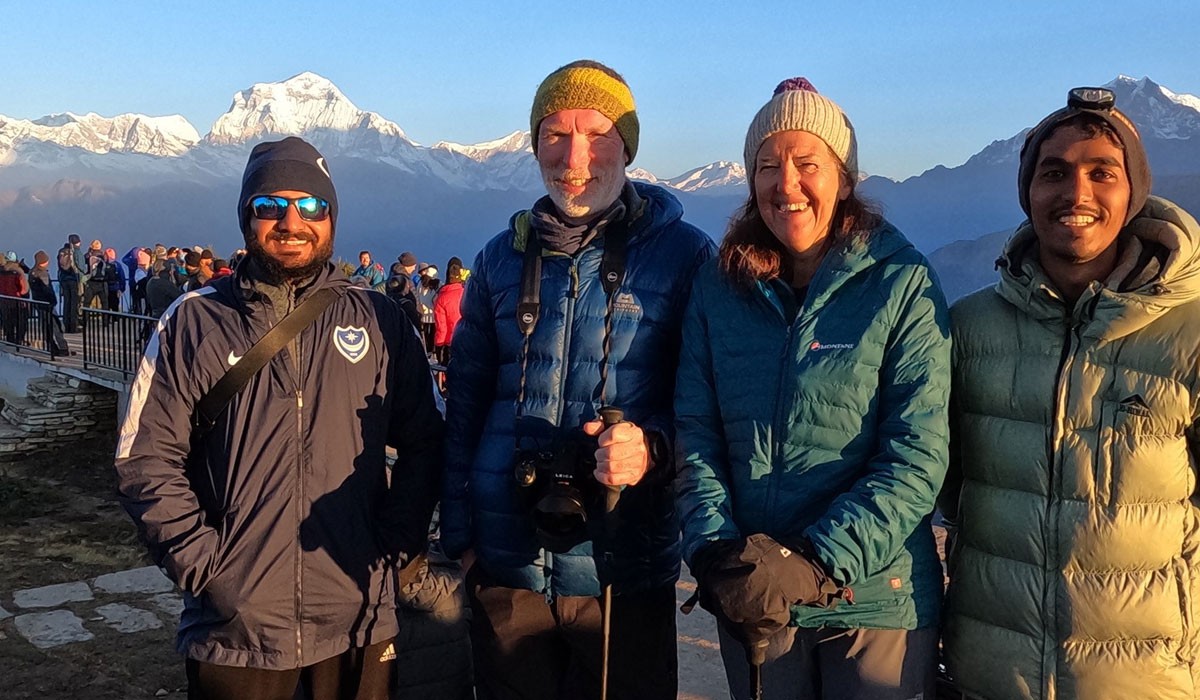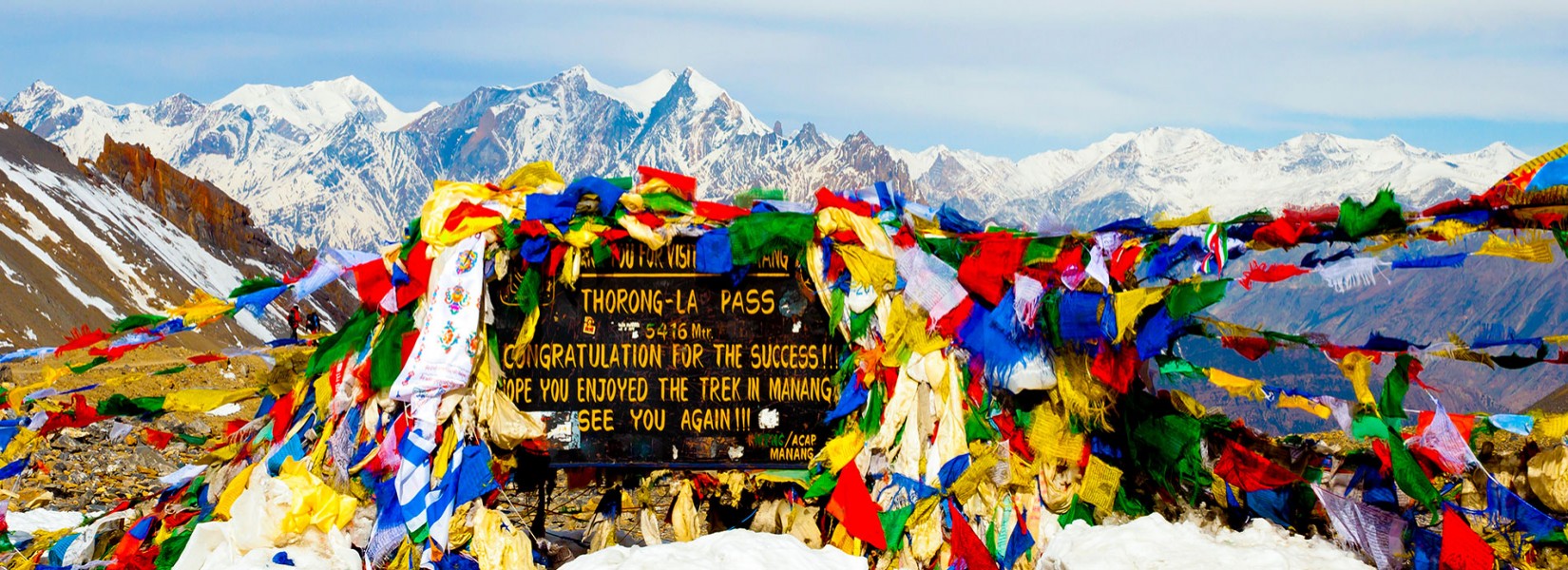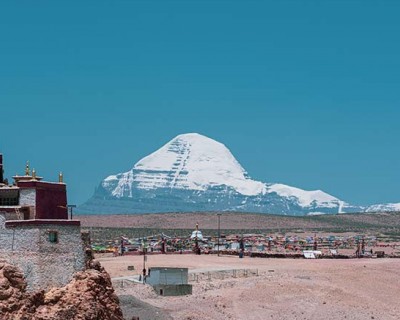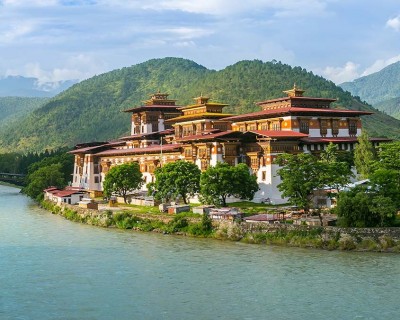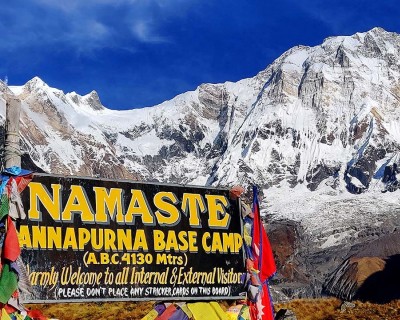Trek Overview- Annapurna Circuit Trek in April
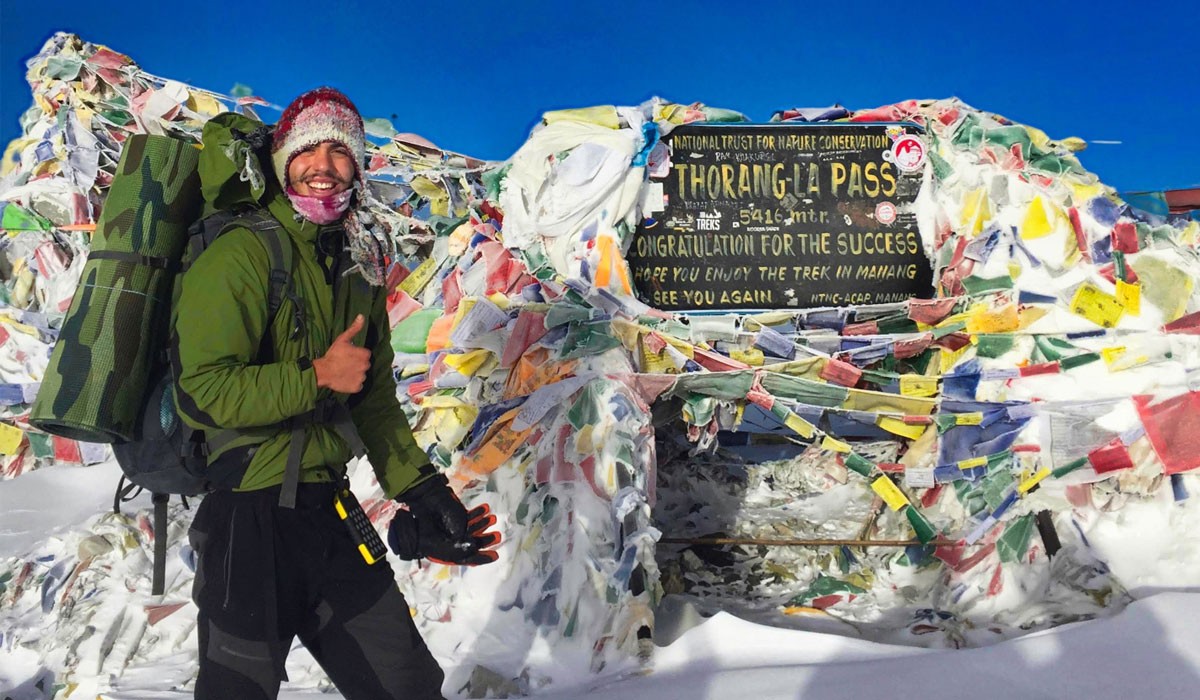
For your incredible Himalayan adventure in the second mainstream trekking route in Nepal during the month of April, there are several packages that you can choose from. The general duration of the Annapurna Circuit Trek in April is about 8- 22 days; the itinerary plans of your adventure depend on the route taken, highlight exploration, and side detours around the region.
In the most general trekking package, your trek in the Annapurna Circuit will start from a scenic drive from Kathmandu to Bhulbule [923 meters/ 3,028 feet], Ngadi [930 meters/ 3,051 feet], Chame [2,670 meters/ 8,759 feet] or Maccha Khola, depending on the duration of your package. Then, moving along with your scenic trekking route, you will make your way toward Pisang [3,250 meters/ 10,662 feet] and to Manang [3,519 meters/ 11,545 feet], which will be an acclimatizing destination after a significant altitude gain.
Proceeding further with your Himalayan exploration, you will then ascend to even higher points like Yak Kharka [4,120 meters/ 13,517 feet] and Thorung Phedi [4,560 meters/ 14,960 feet]. However, the highest elevation jump point in this adventure is Thorung La Pass [5,416 meters/ 17,769 feet], which you have to cross to reach Muktinath [3,760 meters/ 12,335 feet]. From here, you will either drive down directly to Pokhara [820 meters/ 2,690 feet] or move along the gradually descending trail across Jomsom [2,720 meters/ 8,923 feet], Tatopani [1,190 meters/ 3,904 feet] to Pokhara.
We here at Marvel Adventure offer some of the most exhilarating trekking packages to the Annapurna circuit during the month of April. If you are looking for a shorter version of the Himalayan exploration, we have 8 Days Annapurna Circuit Trek. Other longer variants of this classical trekking adventure include packages like 10 Days Annapurna Circuit Trek, Annapurna Circuit Trek 12 Days itinerary, and 15 Days Annapurna Circuit Trek. If you are looking for an even more extensive Himalayan adventure that includes the exploration of other major highlights in the region, our 21 days Manaslu and Annapurna Circuit Trek is the ideal package for you. For booking and any kind of assistance for your iconic Himalayan adventure, you can contact us at our following Contact Information.
Why Do Annapurna Circuit in April?
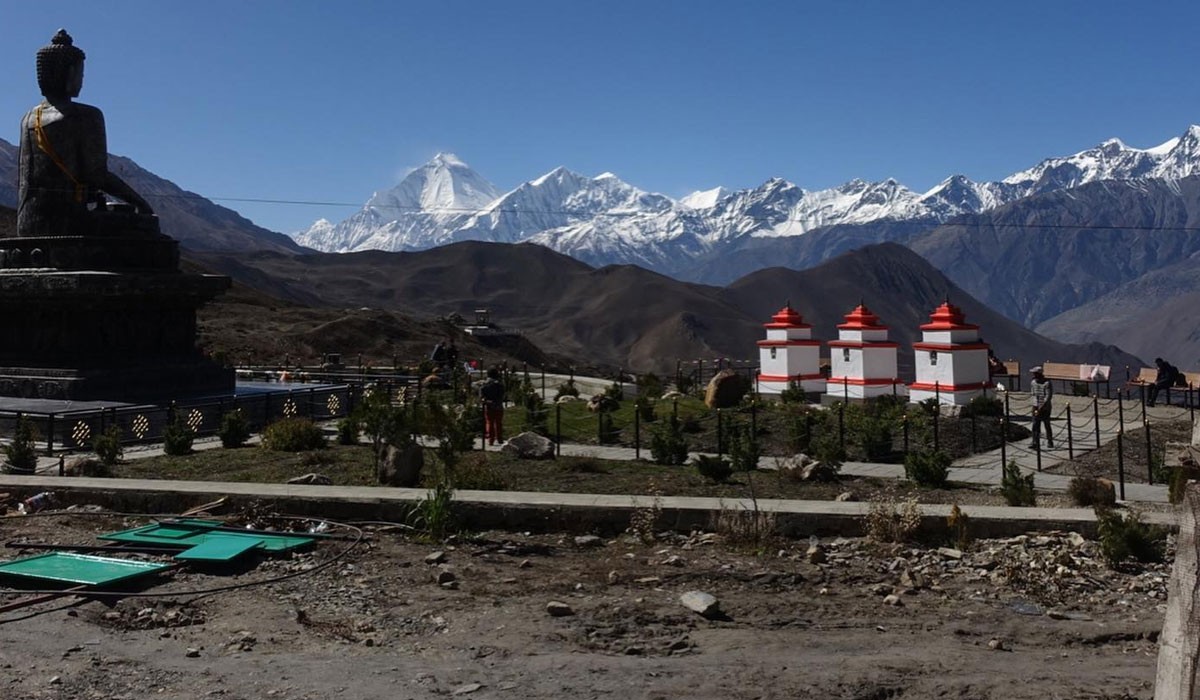
Suitable Climatic Conditions
If you have previously done a Himalayan trekking adventure, then you understand the spring season is slightly warmer than the autumn season. Annapurna Circuit Trek in April will introduce you to the most suitable climatic conditions in the region for a comfortable and memorable experience. Although the spring season begins during the month of March, there are still some remnants of the winter season in the early part of this month. Thus, the month of April is considered to be the peak month of the spring season; it is farther from both winter ends in February and the start of the monsoon in June.
So, you can expect the most suitable climatic conditions during every day of your adventure. The temperature of the Annapurna region during April hovers around 13°C to 22°C, so you will have a comfortable and warmer experience even at alpine altitudes during your trek.
Clear Skies and Paranomic Views
Due to the low precipitation rate during this month, you can expect clear, beautiful days during your Annapurna Circuit trek in April. Unlike the foggy and cloudy days that cover the Himalayan peaks, you will be able to enjoy the striking views of the Himalayan vistas as far as your eyes can reach. The Annapurna Circuit Trek is popular for the incredible views of the Himalayan massifs like Annapurna, Gangapurna, Dhaulagiri, Himalchuli, Pisang, Lamjung Himal, and other adjacent peaks. So, during your trekking adventure, you will be able to enjoy views of these magnificent peaks without any obstructions.
Wildlife Sightseeing
The Annapurna Conservation Area (est 1985) is home to endangered species of flora and fauna like snow leopard, Tibetan argali, blue sheep, orange-bellied squirrel, red panda, grey wolf, black bear, wild dog, impeyan pheasant, cheer pheasant, crimson horned pheasant, etc. Overall, there are 1,352 species of plants, 518 species of birds, 128 species of mammals, 23 species of amphibians, 40 species of reptiles, and 348 species of butterflies in the conservation area. These endangered species of flora and fauna are more active during the blooming season of nature, so, naturally, you will take your time with an exploration of these protected species during the peak month of spring, April. On top of that, you can also participate in side excursions like birdwatching to check out the migratory birds in the region.
Stunning Landscapes
Spring is also known as the blooming season when the entire landscape of the Himalayan region blooms with life. So, you will be able to enjoy your exhilarating trekking adventure traversing across the lush green and colorful landscapes transformed by the spring season. The lower trekking region during the Annapurna Circuit Trek in April is covered with rhododendrons and other wildflowers. And the cascading streams, waterfalls, and rivers nourished by the melting ice add further magic to your Himalayan exploration. The contrast between the colorful green landscapes and the white sparkling Himalayan peaks under the clear blue sky creates stunning sceneries during your adventure in this month. At times, you may even feel like you have left the real world behind and have started the exploration of the mysterious enchanted lands.
Comfortable Camping and Easy Acclimatization
The spring season offers a comfortable camping environment if you are interested in outdoor camping more than teahouse trekking. The comfortable weather conditions that aren’t too chilly even during the nights make the Annapurna Circuit Trek in April the most convenient month for outdoor trekking adventures in the region. So, even if you want to enjoy the camping experience near the foothills of the towering Annapurna, the experience is pretty much comfortable during this month.
As the temperature of the region is warmer during the spring season, especially in April, the peak month of the season, you will also have an easier time acclimatizing at the high altitudes. Relatively, the easy acclimatization process during this month also decreases the risk of altitude sickness, making your journey memorable and gratifying.
Cultural Exploration
Besides the unforgettable Himalayan adventure in the second most popular trekking region in the country, Annapurna Circuit Trek in April will also open doors for the cultural experience during your adventure. Nepal follows the lunar calendar, which means the festivals of the country are not fixated on a single month, so if you are lucky, you might get the opportunity to celebrate some of the fascinating festivals in the country, like Bisket Jatra, Ram Navami, Sindoor Jatra, and Bode Jatra. During this month, the country also celebrates its new year following the Bikram Sambat calendar. So, during your Himalayan adventure in this month, your exploration prospects are limitless.
Read also:
How Difficult is the Annapurna Circuit Trek?
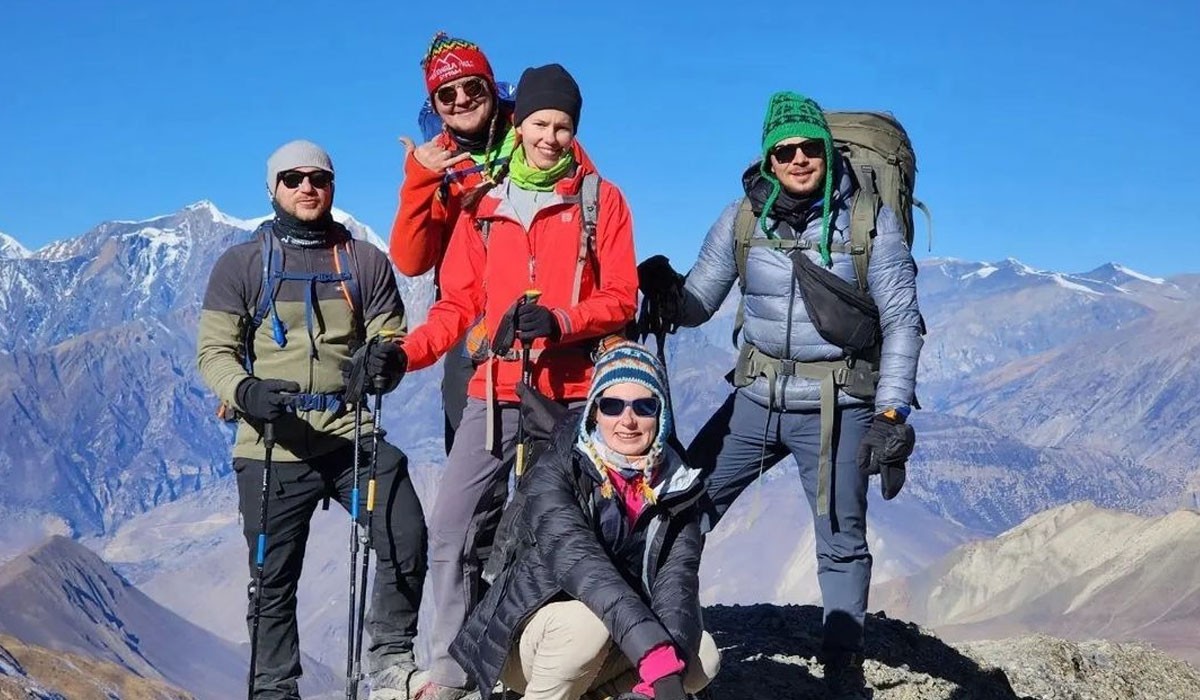
If you are planning to do the Annapurna Circuit Trek in April and are worried about the difficulty level of this adventure. Well, rest assured, this iconic Himalayan adventure is graded as a ‘moderate’ level adventure. It means that you won’t need any kind of technical skills or experience to do this trek; even if you are completely new to high altitude adventures, you are eligible to do this trek.
However, the Annapurna Circuit is still a Himalayan adventure that requires you to traverse across remote terrains and high-altitude points. So, have to prepare yourself for some difficulty factors of this adventure that you have to overcome. Don’t worry; the difficulty factors of this adventure are still relatively mild compared to other high-altitude remote adventures.
Altitude Gain
Despite not being as strenuous as mountain expeditions, the altitude gain in this Himalayan exploration is still high. With the rise in altitudes, the concern for altitude sickness also relatively increases, as it is difficult for the human body to adapt to altitude over 2,500 meters properly. During your Annapurna Circuit, you will overcome the high elevation points above 2,500 meters, like Pisang [3,250 meters/ 10,662 feet], Manang [3,519 meters/ 11,545 feet], Yak Kharka [4,120 meters/ 13,517 feet], Thorung Phedi [4,560 meters/ 14,960 feet] and the highest point of this adventure Thorung La Pass [5,416 meters/ 17,769 feet]. So, you will need to acclimatize properly and pay attention to your body language.
Trekking Distance
The total trekking distance of the Annapurna Circuit is approximately 160 to 230 km, so during your Annapurna Circuit Trek in April, you will cover an approximate trekking distance of about 6-7 hours on average, during each day of your trek. If you are physically active and work out routinely, then this may not seem like a big deal for you. However, in case if you are a beginner trekker and haven’t made enough preparation, the long hours of trekking at rising altitudes can be physically draining.
Weather
Annapurna Circuit Trek in April is undoubtedly a comfortable trekking experience. However, if you have set your exploration for the off-seasons like winter (December, January, and February) and monsoon (June, July, and August), the experience might not be that remarkable. The climatic conditions of the high Himalayan altitudes are already unpredictable during the peak seasons like autumn and spring. But, the trek in these off-seasons adds further climatic challenges to your adventure.
Winter is the coldest month in the region, the higher trekking trails are covered in snow, and you need to carry special equipment and clothes to keep yourself warm. As for the monsoon, the slipper trails, heavy downpours, and natural calamities like flooding and sudden landslides obstruct your exploration and put your life at risk.
Remote Exploration
Regardless of the Annapurna Circuit being a mainstream Himalayan trekking adventure, it is still a remote adventure that takes you across the isolated region in the country. The services and amenities provided at the teahouses along the route are moderate as natives run them. Due to the lack of proper transport modes, the infrastructural and technological development in the region are pretty limited. So, during your trekking adventure, don’t expect top-tier services like those you would expect at your popular vacation destination.
Training and Preparation
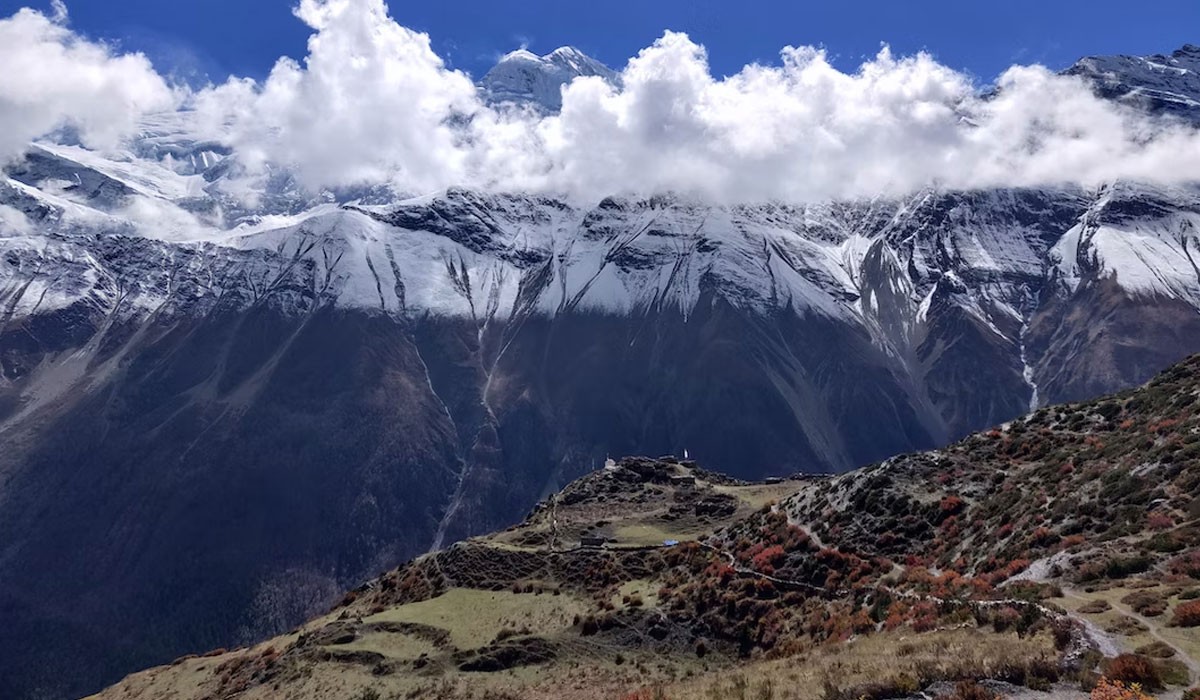
Although there are some hurdles in this iconic trekking adventure, it doesn't mean that they are impossible to overcome. With an adequate preparation period and the right mindset, you will be able to complete the Annapurna Circuit easily. The success rate of the Annapurna Circuit trek is around 98% to 100%, and even elderly trekkers and children have successfully completed this classical trekking route in the past. So, it all boils down to how much effort you put into your preparation period to make your adventure enjoyable and comfortable.
The minimum recommended training period for this adventure is about 4-6 weeks; if you have good health condition and a basic level of fitness, this much preparation will be sufficient for the trek. In case you don’t work out routinely and don’t have an optimum fitness level, you can set the training duration after assessing your physical abilities. Practice hikes, strength, endurance, and cardiovascular exercises are some of the most efficient ways to prepare for this adventure.
Strength and Endurance Exercises: Push up, pull up, deadlift, calf raise, dip, high knees, leg press, overhead press, arms curl, plank, etc
Cardiovascular Exercises: Jogging, cycling, swimming, dancing, jumping ropes, lateral shuffle, aerobics, mountain climber, cardio, etc
Food and Accommodation
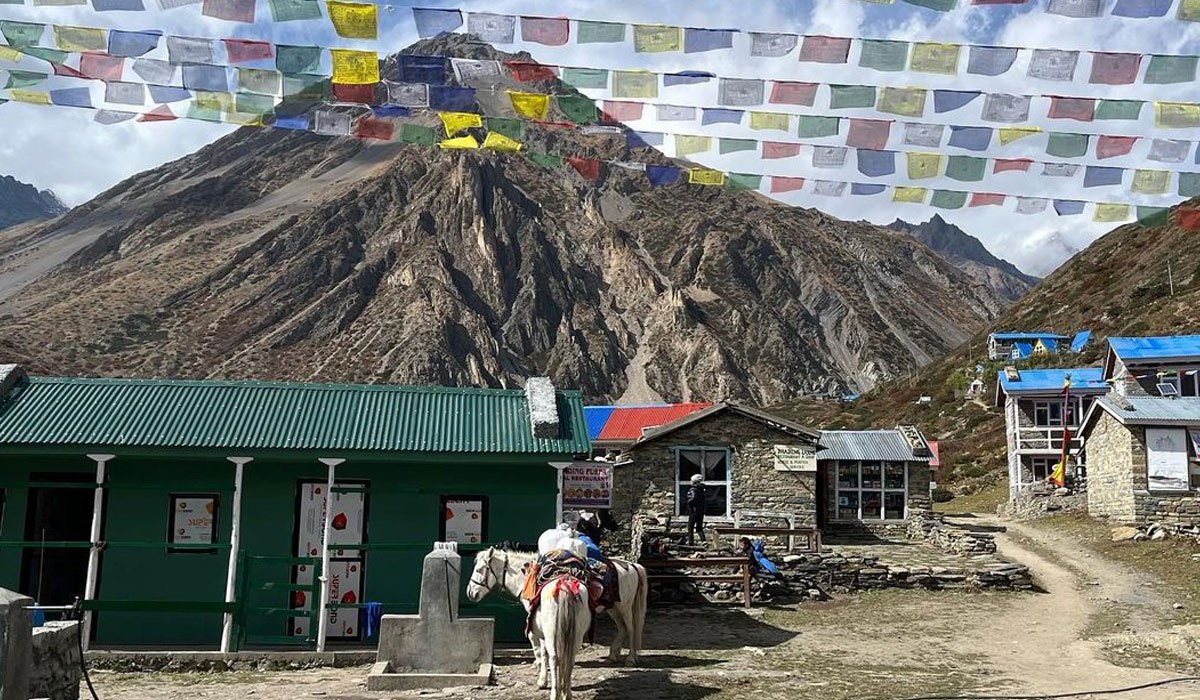
Annapurna Circuit also introduces you to the diverse cuisines of the region. You can expect to taste a wider variety of dishes that comprise regional-traditional dishes, Indian-Tibetan cuisines, and some international dishes with a Nepali touch. The teahouses along this trekking route are run by the natives of the region, so you can expects the taste to be authentic. Here are some food menus that you can expect during your exploration of the Annapurna region.
For Breakfast
Your breakfast generally consists of light and nutritious dishes that can fuel your body for long hours of trekking before you reach your resting point. Generally, your breakfast menus will comprise dishes like tea, coffee, fresh juice, Tibetan bread, regular bread, or toast with jam, honey, and butter. Cereals, oats, cornflakes, muesli, paratha, pudding, chapati, etc are some other popular choices among trekkers.
For Lunch and Dinner
For, you can expect heavy and nourishing traditional dishes like Dal Bhat Tarkari (lentil soup, steamed rice, vegetable, and side dishes), Thakali khana set, and dhindo Gundruk; these are popular regional dishes. Similarly, your menu will also include other delicacies like pizza, dumplings/momo, spaghetti, pasta, macarons, sandwiches, soup, fries, steak, Thukpa, Shyaphale, Rilduk, etc.
**Note: If you are a vegetarian or vegan, you can enjoy your preferred dishes along the trekking route. There are still a significant number of vegetarians in the country, so most eatery institutions prepare both vegetarian and non-vegetarian meals initially**
Accommodation
The accommodation facilities at this mainstream trekking route differ depending on the type of package. There are standard to luxurious modes of trekking packages on this route; on the standard trekking package, you wil stay in well-furnished rooms with two to three adjacent beds. As for the amenities, you will receive a comfortable mattress, clean sheet, pillow, and warm blanket. Like the rooms in your standard package, the bathroom vicinity is also on a shared basis. For a more comfortable and luxurious experience, you have the option to switch to luxurious or custom-tailored packages.
Some Trekking Tips for Annapurna Circuit Trek in April
- Pack right for different climatic conditions in this trekking adventure (break in your trekking boots before trek)
- Enjoy a slow-paced adventure and stay hydrated (recommended limit of 3-4 liters of water per day)
- Pay attention to your body language and be attentive to the symptoms of altitude sickness
- Carry all necessary gear (sleeping bag, duffle bag, trekking poles, ankle support) that make your experience comfortable
- Follow the guidelines and suggestions of the trekkers and porters
- Select the trekking package with enough acclimatization days for the adventure
- Respect local culture and traditions, ask for permission to take photographs
- Carry map and navigation device
- Don’t forget travel insurance with emergency evacuation
- Carry a first aid kit and enough personal medication if you have any
- Pack your favorite snacks; you may not find them at the teahouses
- Bring enough change for snacks and shopping for souvenirs
- Lastly, take it easy and enjoy the experience
